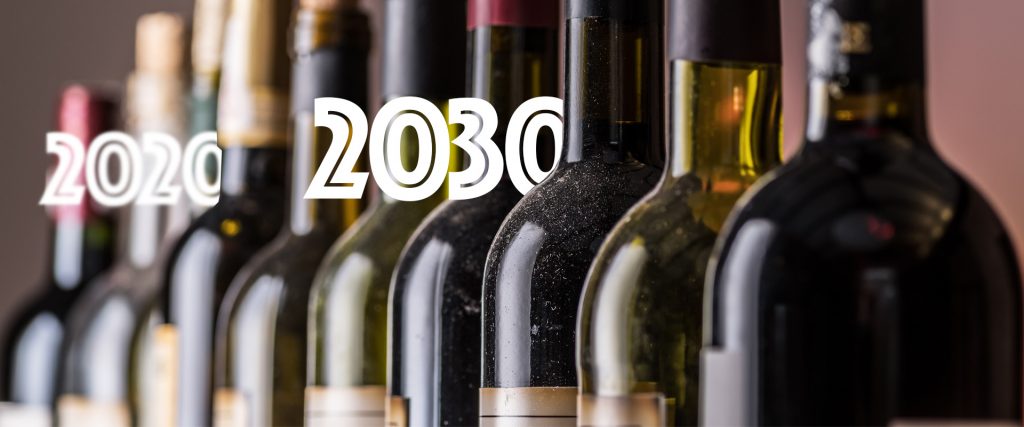Before discussing the future one needs to consider the past and present. And the simple reason for this is that it is only in the here and now that anything has any meaning. So, to envisage the future of Malbec the most fruitful approach is to peek under the surface of what is going on right at this moment; the vast range of contemporary styles and how producers are trying out new things as they seek to redefine perceptions of the grape.
Over the past twenty-five years, Malbec has revealed its flexibility, going through seemingly endless incarnations before eventually settling into a set of oenological criteria that include minimal intervention, respect for location and freedom of interpretation.
Anyone who hasn’t tried Malbec for several years might well be surprised by how much it has changed in the meantime.
Back to basics
An indispensable piece of information when looking to bring oneself up to date with Malbec is that the key to its future lies in the past. In the early 2000s, while the world was first discovering and enjoying the flavours and potential of Argentine Malbec, which at the time was generally modelled on modern Bordeaux styles, wineries weren’t resting on their laurels: they were looking to the future. Winemakers expanded their research with a view to allowing the terroir, rather than the varietal, to take the lead.
By 2010, the quest for quality had shifted from the winery to the vines. Many winemakers wanted to strip Malbec bare; they set oak, steel tanks and extraction to one side so as to create a purer expression of each location.
To do this, two major changes had to be made to the formula that been applied to Malbec since the eighties: harvest periods had to be brought forward to lower the intensity and bring greater freshness while old cement tanks and new cement eggs were introduced or brought back into use. Also making a return were the foudres, the old casks, along with whole bunch fermentation in a wide variety of containers.
So what was new exactly? In-depth knowledge of the varietal and the terroirs, factors that proved to be the final pieces of a puzzle that resulted in fruitier Malbec with more mineral notes, a fresh mountain character and light palate that remains rich in personality.
The future of Malbec, today
As they learned more and more about the varietal, vineyards and terroir, winemakers began to produce more creative approaches resulting in far more personal and diverse wines.
‘I believe that the Malbec of the future is what I’m making today,’ says Matías Riccitelli, one of the most innovative of Malbec producers, as seen in his The Party Malbec 2018, which was made using old-fashioned methods but with eyes fixed firmly on the future. ‘I make wine with two premises in mind: to show respect for the place and to stay true to my vision. The future of Malbec rests in the potential of each terroir and interpreting that terroir with complete freedom.’ Many others agree and have no fear of admitting that their goals today have changed from those of a few years before. ‘Today, we’re making Malbecs to be drunk and enjoyed, not to be contemplated,’ says Matías Ciciani as we share his Escorihuela Gascón Organic Vineyard Malbec 2018, which is oak-free and was grown using biodynamic methods.
These new techniques and concepts are resulting in the appearance of Malbecs that were aged in concrete, foudres, old casks and pre-used barrels, resulting in a light, easy-drinking style for a new high-end range of Argentine wines of elegance, complexity and freshness.
There are dozens of notable examples, but among the most recent releases that might help to bring drinkers up to speed we might mention essential wines such as Sebastián Zuccardi’s latest offering from Paraje Altamira: The Amphora Project Malbec 2018; Altar Uco Malbec Edad Moderna 2018 fermented and aged in concrete vats, other naked options are Gran Malbec de Ángeles Single Vineyard 2016, Lagarde Organic Malbec 2019, which spent no time in wood, Krontiras Natural Malbec 2018 and On The Road Malbec 2019, the new red from Ernesto Catena which has no added sulphites.
Other new wines very much worth discovering include Valle Arriba El Cateño Malbec 2018 from the Calchaquí Valley, Casa Petrini Malbec 2018, which revels in the profundity of the Tupungato terroir; L’Sprit de Chacayes 2019 by Francoise Lurton from Chacayes, which contains a little added Cot in the final blend, or the distinctive Vinyes Ocults Maceración Carbónica 2019, from oenologist Tomás Stahringer.
While Argentine oenologists promise that there are plenty more surprises down the line, once one has tried these new labels, they’re bound to agree that the future of Malbec is now.



